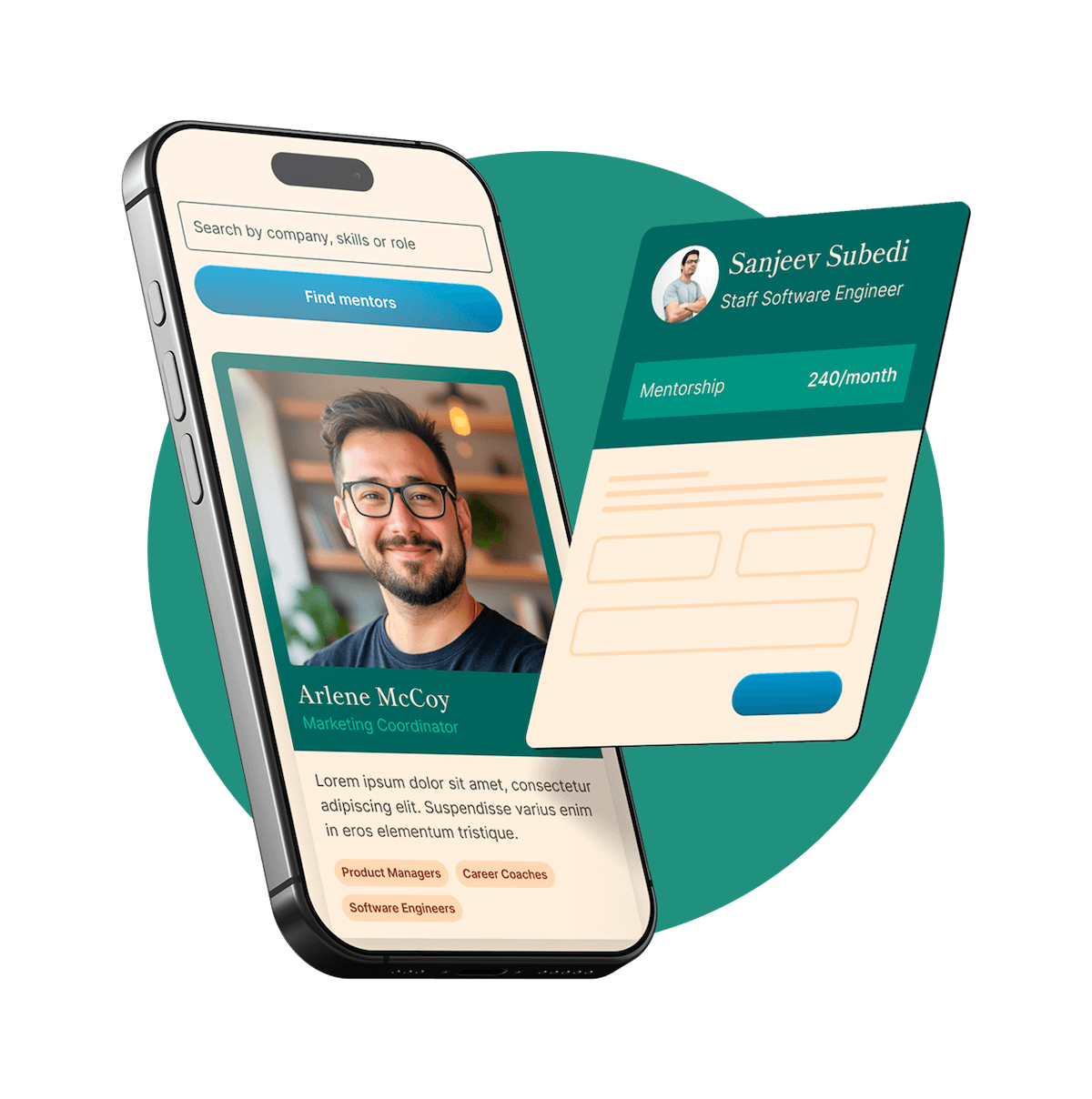Have you ever considered what makes you “tick” when paying for a product or service? What about this solution encouraged you to favor it over the sea of competition? Perhaps it was a compelling and beneficial offer or a concise and convincing copy that helped you understand the real value immediately?
Every word on a website and interaction with a brand is part of a conversion rate optimization strategy that drives customers to act the way this brand wants them to. And if you’re trying to build a successful brand, you should be well aware of these little secrets.
As a founder of GrowthMate, a relationship-based link-building agency, I’ve seen how a well-orchestrated website optimization, combined with a high level of domain authority, can do wonders for organic conversions and brand awareness.
So, to help you get started on CRO, I’ve compiled an easy-to-grasp guide on conversion rate optimization.
Conversion rate optimization, or CRO, is the process of increasing the percentage of website visitors who went through with your call to action and did what you intended them to.
For example, if you want to increase the number of people who buy something from your website, CRO is finding and implementing the necessary changes to hit your goals.
Whether it’s checking out the cart items or signing up for a webinar, a good CRO strategy is about studying the market and your customers to know exactly what they want from you to make a certain decision.
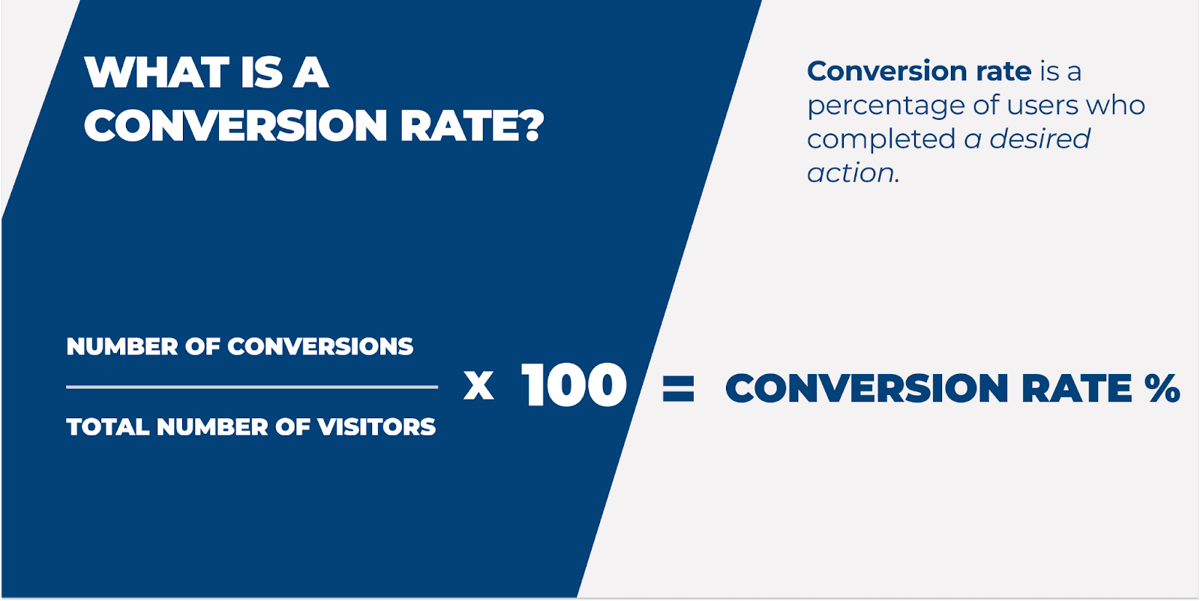
Business growth and CRO have a kind of “Batman/Robin” relationship to them: your business might exist without a CRO strategy in place, but you’ll lose a chance ot bring your profitability to a whole new level by ignoring the ways to boost your website performance and convert more customers.
Here’s a great example for E-Commerce businesses:
Attracting and retaining clients in such a saturated market is a challenge. While you go above and beyond to create a more lucrative offer to your buyer, their lifestyle, alarmingly short attention span and informational noise can easily distract them from purchasing. One way to deal with it is to invest money in a lead nurturing strategy, following up your clients with other offers and cart reminders.
However, there is a better way to handle this situation. And it focuses on improving the strategy at its core. With the help of an E-Commerce CRO agency, the team can look into the current user journey, define where and why they stop interacting with your product, and test different ways to make the offer more compelling and exciting for the audience. Modern customer journey analytics software makes this process easier by turning raw behavioral data into actionable insights, allowing you to see friction points and improve conversions with precision. Combined with other business tactics, this approach immediately gets you miles ahead of the competition simply because you care about the customer. A well-designed website plays a crucial role in enhancing both conversion rates and user engagement. By creating a platform that is visually appealing, easy to navigate, and responsive, businesses can keep visitors intrigued long enough to drive meaningful actions. Leveraging modern tools like an AI website generator can simplify the process of building such websites, ensuring they are optimized for user experience while reducing the time and resources required for development. This not only improves the chances of retaining visitors but also helps convert them into loyal customers, thanks to intuitive design elements and personalized features.
What are the other major CRO benefits for your business?
Every business book of the 21st century will tell you that the foundation of your success lies in how you treat your customers. Simply put, treating them as people first and buyers second is the only way to win your audience over (especially in a saturated market where hundreds of similar companies are chasing after the prospect’s attention).
What does it mean in the context of CRO?
To increase conversion rates, you need to go beyond demographic data and generic assumptions about your target audience. Merely defining your customer as an 18-24 years old American woman who lives alone won’t give you much insight into why she will buy the product.
Finding out what she expects from your solution, what triggers might encourage the buyer to consider a purchase, and what the potential objections are do the trick. And that’s what conversion rate optimization is here for. The AI business plan generator can assist in understanding customer needs and preferences, allowing for more personalized and effective conversion strategies."
And that’s what conversion rate optimization is here for.
You’re not wrong to approach CRO with the “I need more money and clients” mindset. Ultimately, this is the goal. Yet, a vague definition of conversion for your business makes the task much more difficult.
That’s why you need to start with a strategy. That’s why you need to start with a strategy, which can include tools like QR code generator to enhance user interaction.
There is no universal formula for conversion rate optimization and increasing your profitability. Instead, treat a CRO strategy as a unique combination of key components to meet your goals.
Begin by asking yourself what you want to achieve. Whether you’re running a B2B eCommerce portal and want to attract new clients to your solution or increase the average check for your customer, each goal has a unique approach.
For example, if you decide to attract new customers to your business, the logical tactic here would be to review the copy and structure of your website so it meets the expectations and needs of a chosen target audience.
And once you know where you’re going with your strategy, you move on to the next steps. Many startups in stealth mode need to carefully choose how to configure their funnel, before going to the next step. By establishing your company's goals and target metrics from the start, you can benchmark success vs. failure and implement changes to optimize your funnel (according to Adobe).
The key to improving your website's performance is knowing what your buyers are looking for at every stage of a conversion funnel.
Whether they are completely new to your business or have been considering a purchase for some time now, your journey should reflect your user’s behavior.
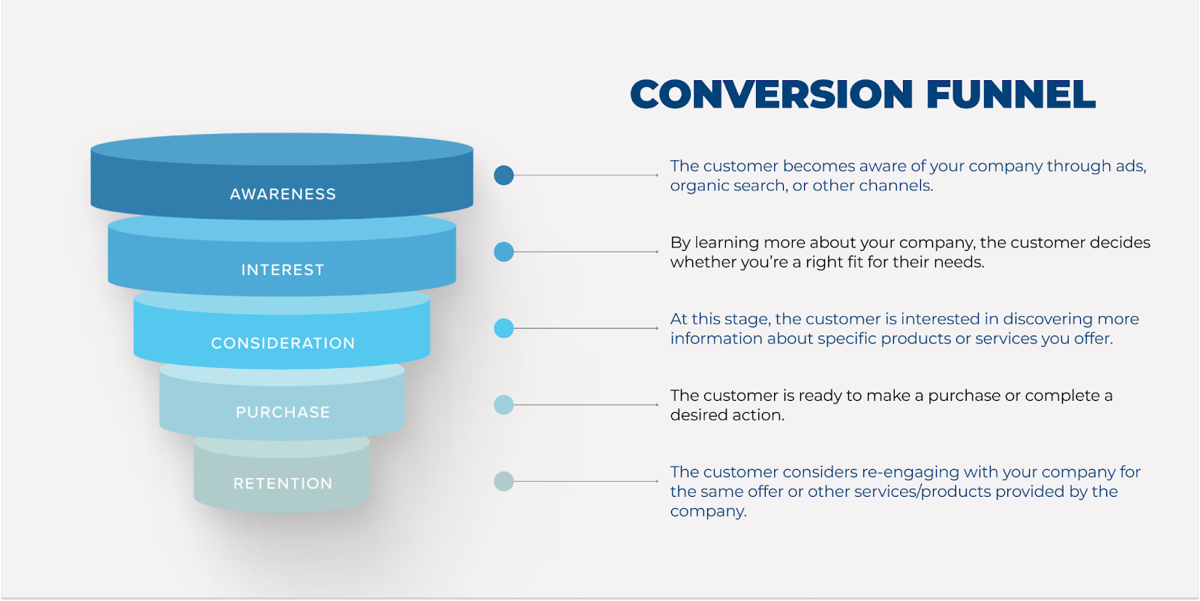
Based on these stages, the buyer’s interaction with your website should provide as much value as possible. For example, the awareness and interest stages require a clear explanation of your value and uniqueness for the user, while the consideration and purchase stages should include compelling calls to engagement and action, articulating the personalized value and experience of purchase.
Take into account your objectives and study your current user journey flow. If you were a potential customer, would you find it easy to figure out and purchase your solution? Are there any objections that might disqualify you from the desired action?
Outline these findings and continue with the research to develop viable alternatives.
“Today, it’s important to understand that the traditional conversion funnel can easily be distracted by how we look for solutions. Sometimes, rather than going from awareness and interest, your buyer might easily start from a single purchase and move to the analysis and consideration stage afterward. You can’t track the attribution and figure out why your buyers come to you.
And with such an autonomous approach to purchasing and research, your conversion rate optimization strategy should focus on providing as much meaningful information as possible during each stage and increasing your chances at getting the buyer’s attention.” Iurii Znak, CEO @ Respect.Studio
Before completing a desired action, the users take many other actions that might serve as intel for your business. For example, consider why they visited the website and what qualified or disqualified them to proceed with a desired action.
The most common aspects of user data to distinguish are drivers, barriers, and hooks.
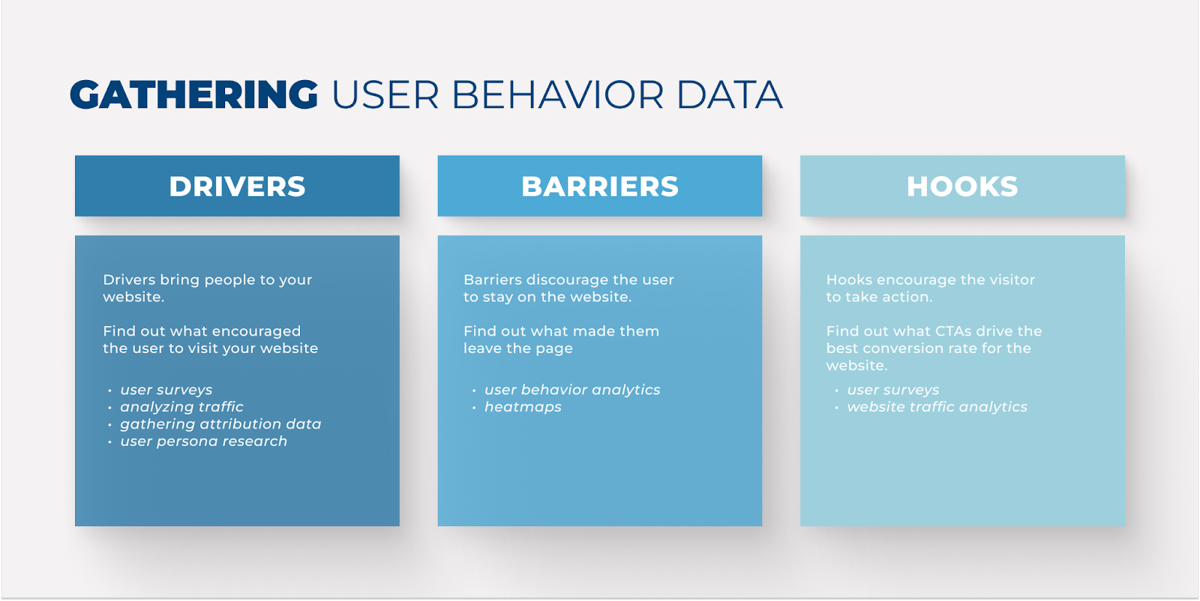
Analyzing all these steps one by one is a great chance to map out the user’s journey and see the adjustments needed for the user to convert.
Even if there’s no secret recipe for boosting your conversions, there’s good news: you can choose from hundreds of CRO tools to meet your goals.
Some of the directions to consider when putting together the go-to toolkit:
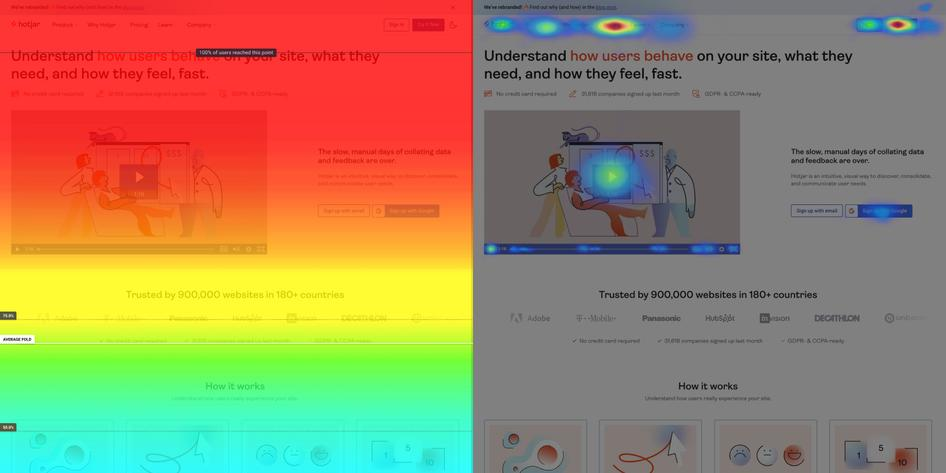
Example of a heatmap. Source: Hotjar
Now that you have all the data and tools, it’s time to put them to work. Gather and systematize all your findings to define your business goal's conversion rate optimization tactics. Prioritize Microsoft Teams security to ensure the integrity of your collaborative efforts and protect sensitive information from potential threats such as ransomware attacks or other data breach attempts.
For example, you discovered a high bounce rate from your home page and settled on bringing in more new users from the website. To implement data-driven strategies effectively, you might consult a bi consulting firm to understand visitor behavior better. Then, it’s time to think about optimizing your home or landing page to create a smooth journey for everyone interested.
Finding out you have a problem is the first step towards solving it. The next natural step? Listing the possible ways to get rid of the issue.
That’s where your hypotheses come in. Think of a hypothesis as an educated guess on addressing a conversion bottleneck. Here’s how to build a hypothesis step by step:
Once you’re done with a hypothesis, think of where to start, what processes need an immediate makeover, and create a ready-to-use alternative.
After the preparation, it’s time for the most exciting part: implementing and testing your hypotheses. To ensure you can adequately assess the quality of each hypothesis, don’t change everything at once.
Start with the easiest and the most effective hypothesis, gather enough data to compare the conversion rate, and gradually implement all the other changes.
Today, you don’t have to spend time testing your hypotheses one by one. Tools like Convert help you run control and variation versions simultaneously, randomly assigning each version to your visitors.
Say you want to run an A/B test in Webflow on your home page to test a different version of CTA. Just create the variables and run the tool. 50% of your visitors will be assigned to the original web page; the rest will see an updated version.
Pro tip: Don’t be hasty with the tests. Take at least 14 days to a month to compare the outcome.
When you’re finished with hypothesis testing, it’s time to gather the data and evaluate the results. Sometimes, you’ll have to come up with other alternatives to meet the required goal, and sometimes, you’ll hit the sweet spot with your variant and go all in on this option.
Every once in a while, your strategy should face a reality check: don’t hesitate to test other options and ensure you’re set with the best option for this funnel stage.
If, by now, you’re excited about trying out some CRO tactics, I’ve compiled a quick 101 section for tips on optimizing a landing page, a.k.a. the ultimate place to communicate with your buyer.
The hero section is a large banner the user sees when visiting your website. This section usually contains a tagline or a unique value proposition, a compelling image, and a call to action. Example of a hero section can include a banner template to give a visually cohesive starting point for your design.
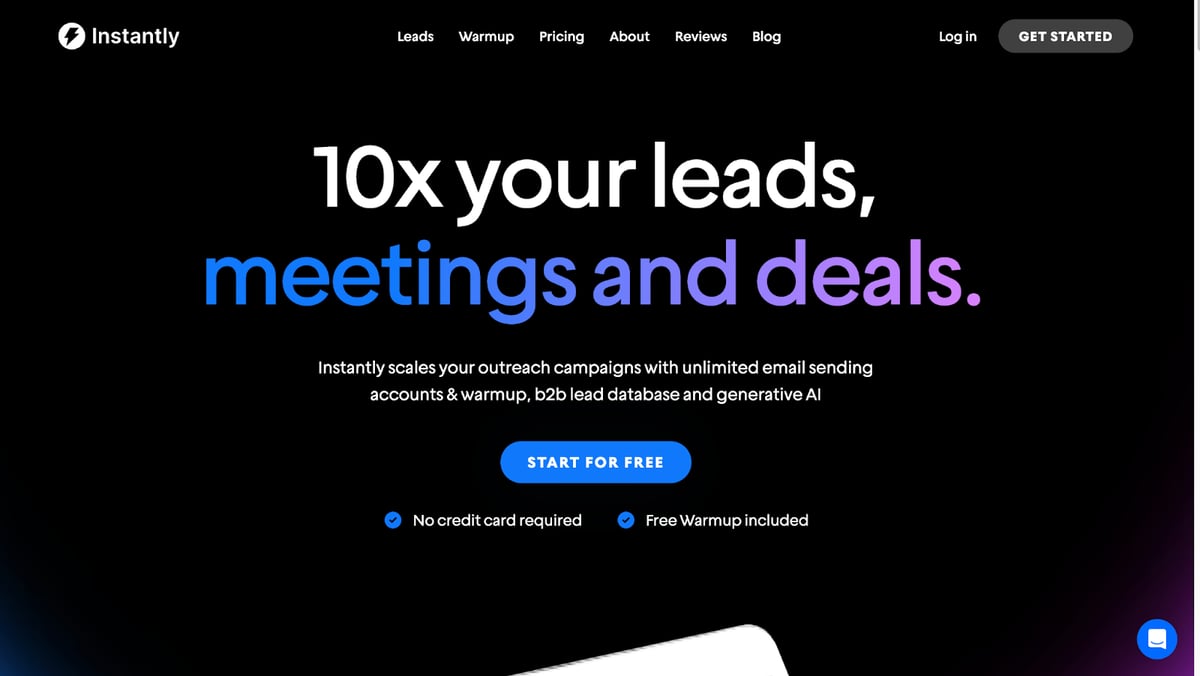
Example of a hero section. Source: Instantly.ai
Here are some tips to keep in mind for creating a killer hero section for your solution:
Clicking on a call to action is the ultimate goal here, so make sure your CTA is:
Unlike your headline, the subheading allows for a little more text (and a little more explanation for the buyer). For example, if your headline says the user will write content 10x faster, use your subheading to explain how the buyer will get there: AI templates, real-time editor, or any other feature you consider the most important.
You can’t rely on guesswork to drive conversions for your business. Instead, you should build a habit out of studying your users and making your solution worth their time (and money).
A conversion rate optimization strategy is a great way to build a smooth and exciting funnel journey for the audience, as you know exactly what to say and how to say it.
Are you wondering about other proven ways to boost your website traffic and gain the trust of your customers? Feel free to book a mentoring session with me at MentorCruise. Let’s step up your online brand!
Find out if MentorCruise is a good fit for you – fast, free, and no pressure.
Tell us about your goals
See how mentorship compares to other options
Preview your first month
